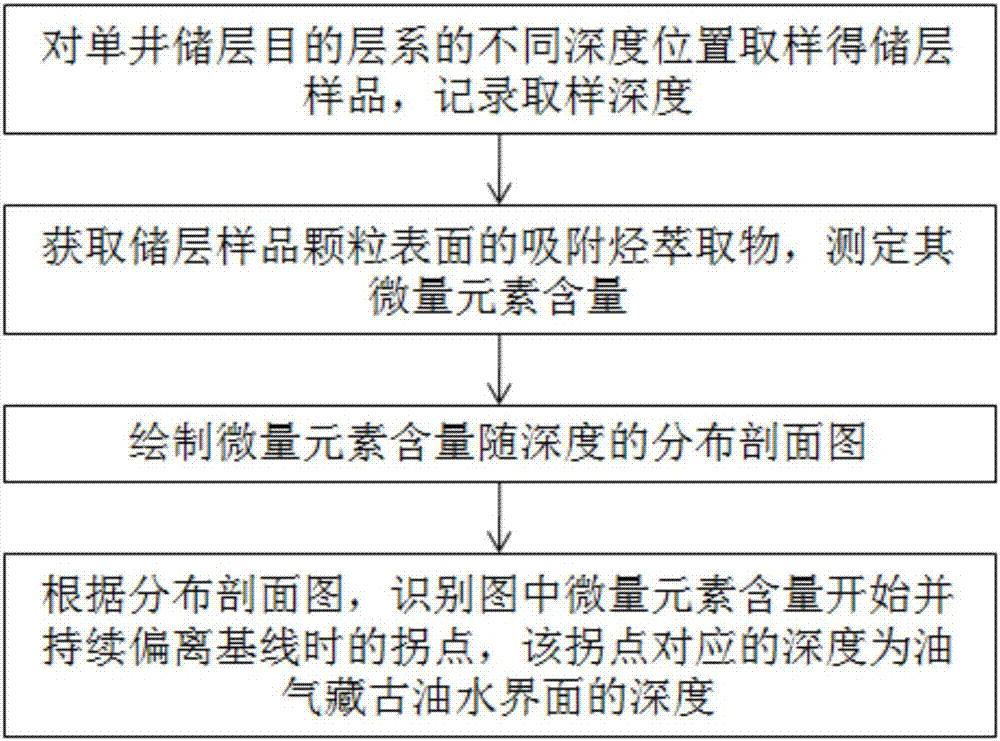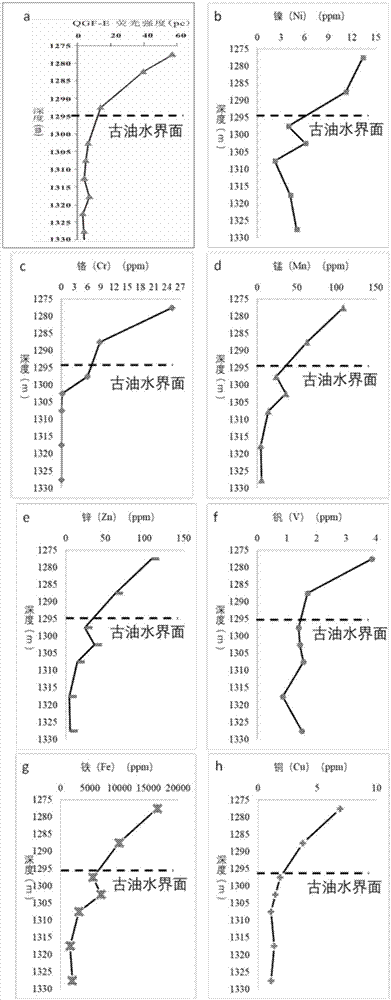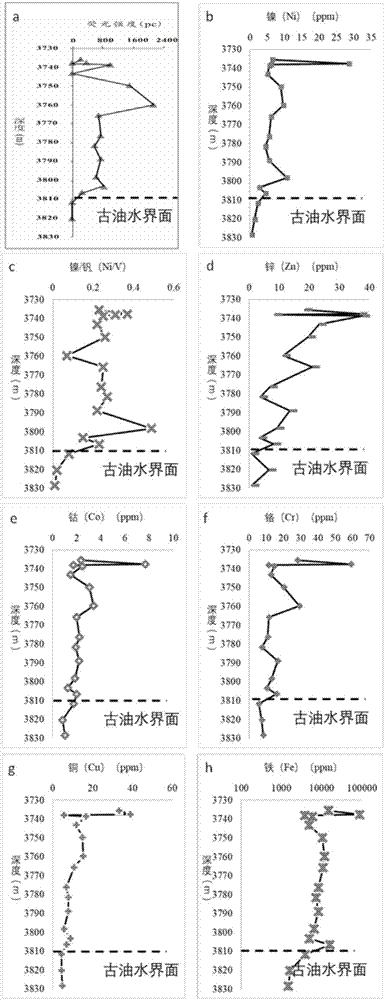Ancient oil-water interface recognition method and application thereof in reestablishment of crude oil charging history
An oil-water interface and identification method technology, applied in the field of element geochemistry, oil and gas exploration, can solve the problems of large human factors, limitations, limited scope of observation and statistics, etc., and achieve the effects of high sensitivity, wide promotion and high accuracy
- Summary
- Abstract
- Description
- Claims
- Application Information
AI Technical Summary
Problems solved by technology
Method used
Image
Examples
Embodiment 1
[0045] The Dampier Basin on the Northwest Continental Shelf of Australia was selected as the research area to identify the paleo-oil-water contact of oil and gas reservoirs, including the following steps:
[0046] (1) A single well drilled in the basin encountered a Cretaceous sandstone reservoir to obtain a sample of the reservoir. The sampling position extends from the top of the Cretaceous reservoir to the middle of the known water layer below, and the interval between the sampling points is 5 -10m, a total of 7 sampling points, numbered sequentially, record the depth corresponding to the sampling point, the data is shown in Table 1. It should be noted that when sampling, about 20g of core samples are selected as reservoir samples, and when there are no core samples, 20-50g of cuttings samples are selected as reservoir samples.
[0047] Table 1 Statistics of Cretaceous sandstone reservoirs drilled in Dampier Basin, Northwest Continental Shelf, Australia
[0048]
[0049...
Embodiment 2
[0058] The Tazhong area of the Tarim Basin is selected as the research area to identify the paleo-oil-water contact of oil and gas reservoirs, including the following steps:
[0059](1) A single well drilled in this area encountered Silurian asphaltic sandstone reservoirs and systematically sampled to obtain reservoir samples. The sampling position extended from the top of the Silurian to the middle of the water layer below the asphaltic sands. The sampling point The interval distance is 2-10m, a total of 17 sampling points are numbered sequentially, and the depths corresponding to the sampling points are recorded. The data are shown in Table 2. It should be noted that when sampling, about 20g of core samples are selected as reservoir samples, and when there are no core samples, 20-50g of cuttings samples are selected as reservoir samples.
[0060] Table 2 Statistics of Silurian sandstone reservoirs drilled in the Tazhong area of the Tarim Basin
[0061]
[0062] (2) O...
PUM
| Property | Measurement | Unit |
|---|---|---|
| Particle size | aaaaa | aaaaa |
Abstract
Description
Claims
Application Information
 Login to View More
Login to View More - R&D
- Intellectual Property
- Life Sciences
- Materials
- Tech Scout
- Unparalleled Data Quality
- Higher Quality Content
- 60% Fewer Hallucinations
Browse by: Latest US Patents, China's latest patents, Technical Efficacy Thesaurus, Application Domain, Technology Topic, Popular Technical Reports.
© 2025 PatSnap. All rights reserved.Legal|Privacy policy|Modern Slavery Act Transparency Statement|Sitemap|About US| Contact US: help@patsnap.com



